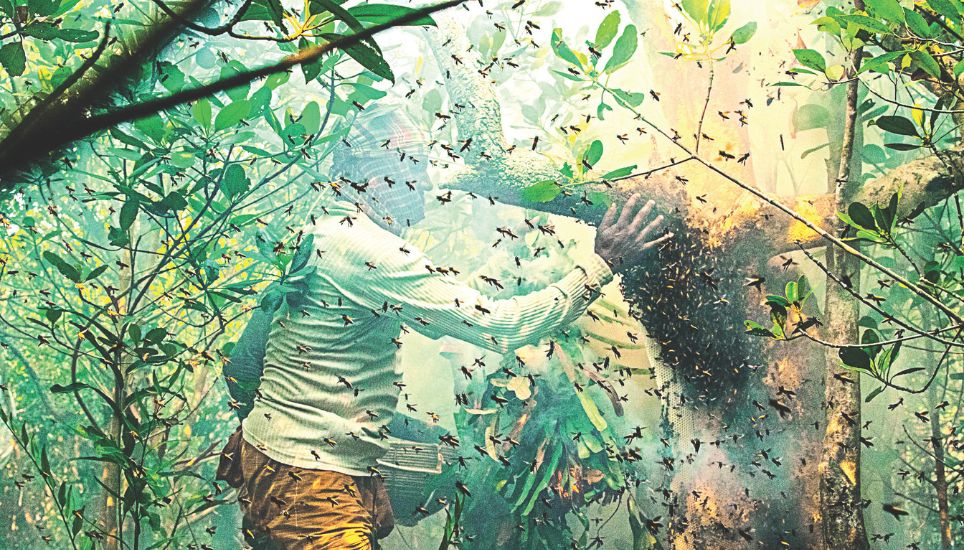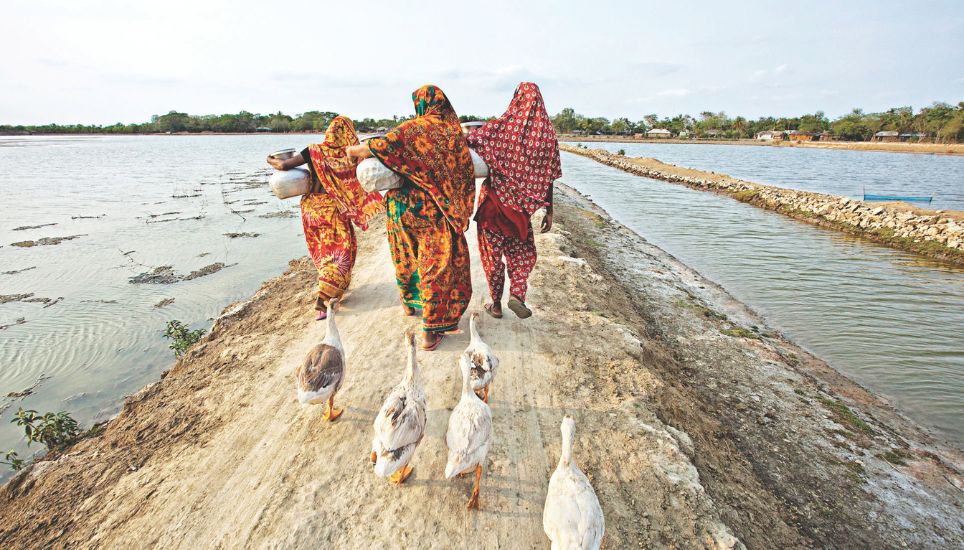
Born with the name Muhammad Mostafigur Rahman, but to the world, he is known as Mostafig Mamun—a photographer and travel writer whose passion for capturing moments has spanned nearly three decades. His lens has witnessed the pulse of life in every corner of society, from the intensity of politics and the intricacies of economics to the vibrancy of sports, culture, and the urgent narrative of climate change.
However, beyond the professional, there lies a deeper love for photography—a love that drives him to capture the soul of Bangladesh, immortalising its life, nature, and especially the wild beauty of the Sundarbans.
His photographs are more than images; they are literal stories of their own, and they have rightfully earned him numerous prestigious international awards. In a heartfelt interview with Mostafigur Rahman, we delve into the journey of a man whose life is devoted to the religion of immortalising moments…
How did your interest in photography begin?
As a child, I would eagerly seek out foreign magazines from the bookstore, not just to cover my school books, but for the treasure hidden within their pages—images that captivated me. I would pour over those photographs, losing myself in their beauty long before they became mere binding covers. It was in those moments, staring at those pictures which spoke to my soul, my interest for photography was sparked.
Do you have any memories of taking photos during your childhood?
Even though my fascination with photos blossomed early, the chance to capture images on my own remained out of reach as I grew up in a village where cameras were a rarity. So, my childhood was spent in quiet admiration.
How was the experience of using a camera for the first time?
The first thrill of holding a camera was in fifth grade, when my friend Lipu’s father let me handle his Yashica Electro 35, a rangefinder model. But it wasn’t until seventh grade that my true photography began. I stumbled upon a forgotten treasure in my uncle's wardrobe—a Pentax MG-1 DSLR, complete with a 50mm prime lens and an 80-200mm zoom lens.
The camera, long neglected and covered in fungus, was nearly beyond repair. But after bringing it back to life, I started my photographic adventures. With Tk 10 saved from my lunch money, I bought black-and-white Reeva films, and for another Tk 10, I had it developed at a local studio. Those were my first steps, igniting a passion that quickly grew.
I taught myself to develop the films, using that same camera all the way through to my varsity days at Dhaka University. It was only then that I could afford to buy my first camera with my own money—a Nikon FM-10 film DSLR.

When did you decide to pursue photography as a profession?
The moment I stepped into university, I plunged headfirst into the world of journalism, balancing my time between writing and capturing moments through my lenses for a daily newspaper. But my heart knew where it truly belonged.
I enrolled in a photography course at the Dhaka University Photographic Society, and it was there that I realised my passion for photography was more than just a hobby—it was my calling.
That realisation drove me to make a life-changing decision: to pursue photography as a career. After completing my varsity education, I didn’t hesitate. I enrolled in a one-year diploma programme at Pathshala South Asian Media Institute, the most prestigious institution in the country, to refine my skills and fully embrace the path.
Can you tell us about your professional life?
After my varsity days, I joined the country's first online news portal, Bdnews24.com, as a photojournalist. I am now working there as the Head of News Photography. From 2008 to 2018, I also worked with the German media outlet Deutsche Welle.
Do you have any memorable or interesting experiences?
Back in 2015, I faced a truly terrifying moment that shook me to my core while photographing honey collectors in the Sundarbans. As I focused on capturing their dangerous work, I was suddenly and viciously attacked by a swarm of bees. It was so severe that I found myself staring at death in the face, barely escaping with my life.
However, that wasn’t my only brush with danger. In 2013, while photographing in Lawachara National Park, I experienced another harrowing encounter. A group of Hanuman became aggressive, and one hurled a branch that pierced through my lips, forcing me to undergo plastic surgery.
These experiences were both terrifying and unforgettable, reminders of the risks I’ve taken in my pursuit of capturing the world through my lens.
You have won many awards in photography competitions. But the first award is always special. Can you share your feelings about it?
My first award, the "Unseen Asia" prize from Reader’s Digest Asia, was a moment of pure joy. The winning photo was splashed across two pages in the December 2013 issue, a surreal moment for someone who had been a regular reader of the magazine.
I still remember the day I stumbled upon an advertisement in the magazine calling for photo submissions. On a whim, I sent in a photo via email—a shot of farmers in Tangail’s Madhupur, their bicycles piled high with pineapples as they made their way to market.
What are some of the notable awards you’ve won?
In the past 11 years, I’ve won over 50 international awards. Some notable ones include the Reader’s Digest Unseen Asia Award, the CGAP (Consultative Group to Assist the Poor) Award based in Washington, the SAARC Photography Award from the SAARC Cultural Centre in Sri Lanka, the Mangrove Photography Award in Seattle, USA, the USAID Agrilinks Photo Challenge, the International Photographic Salon of Japan (Asahi Shimbun Award), the Siena International Photo Award in Italy, the Pink Lady Food Photographer of the Year in the UK, the International Photo Award in the USA, and the Bangladesh Tourism Board Photography Award, among others.
Which award do you consider the most prestigious, the one that brought you the most joy?
I think the CGAP award brought me the most joy, particularly because it was awarded for a photo of honey collectors in the Sundarbans, one of the most dangerous professions in the world's largest mangrove. This award was the result of long-term work in the Sundarbans, and winning it was a great source of happiness. I have also won several other international awards with photos taken in the Sundarbans.

You have quite a few publications as well.
Yes, I’ve published four travel-related books and one on photography.
DEKHUN BANGLADESH: This book covers the details of traveling across all 64 districts of Bangladesh.
DEKHUN SUNDARBAN: A travel guide focused solely on the Sundarbans.
DEKHUN SAMUDRA SOIKAT: A traveling book about all the beaches in Bangladesh.
These three books were published by Obosor Publishing House.
BONE BERAI: This book is about all the forests in Bangladesh, published by BPL.
And the photography book "CELEBRATING COLORS OF BANGLADESH" was published by the Consulate General of Bangladesh in Milan, Italy.
You’ve also participated in several international exhibitions, right?
Yes, I’ve taken part in numerous photography exhibitions both at home and abroad. I had a solo photography exhibition in Milan, Italy, in January 2023. I’ve also participated in group exhibitions at Reforma Avenue in Mexico City, the University of Colima in Mexico, Seef Mall and Mall of Dilmunia in Manama, Bahrain.
Additionally, I’ve been part of group exhibitions in Bangladesh, Italy, the UK, the USA, Japan, Sri Lanka, Turkey, Hong Kong, Taiwan, Spain, Germany, and other countries.
What are your thoughts on the future of your photography?
I want to continue taking photos until the last day of my life, showcasing the beauty of Bangladesh to the world. I also plan to publish a book featuring photographs from different countries around the globe.
